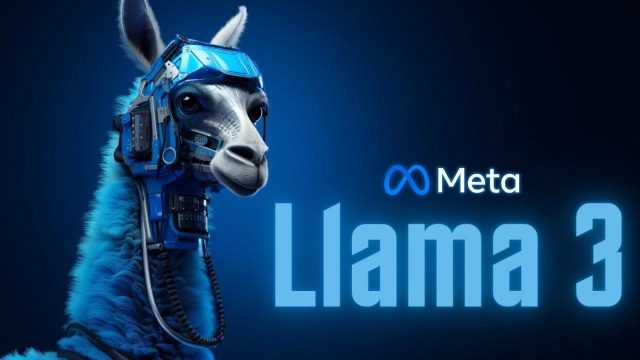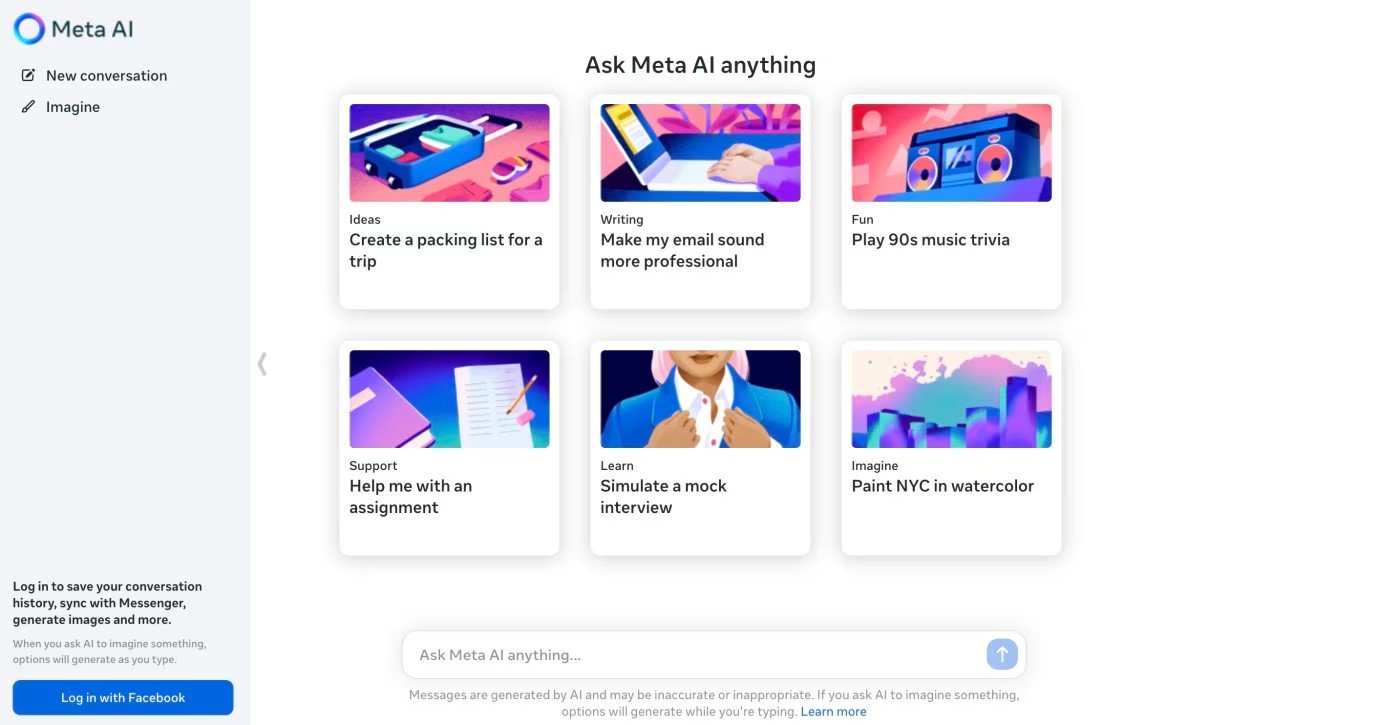Meta’s Powerful Artificial Intelligence: What is Llama 3?

Technology giants are descending on the square one by one. While everything is moving very fast in the world of artificial intelligence, giant companies are working with all their strength to make a difference. Google, which has made serious progress with ChatGPT-4o and taken its capabilities one step further with Open AI and Gemini, is one of the leading examples. On the other hand, there is another company that makes serious investments in artificial intelligence, although its name does not come up as much as others: Meta continues to continuously develop its large language model (LLM) called Llama.
Llama is becoming an increasingly important player in the game, especially with its open source nature. Meta recently made a big splash by launching the Llama 3 AI model. The new model is free to use, has a large user base and is open source. Although it is not as popular as ChatGPT, Llama 3 is really very talented. Actually, there are no specific criteria to compare artificial intelligence models, but we will try to make comparisons by taking some elements into consideration. Some Llama 3 developers have been sharing benchmarks comparing the latest models to some of the leading alternatives, and in most cases Llama 3 comes out on top. These benchmarks include math, natural language processing, coding abilities, and general knowledge and comprehension skills.
Meta’s Artificial Intelligence: What is Llama 3?
Llama 3, the successor to Llama 2, is an artificial intelligence model backed by social media umbrella company Meta, trained on massive datasets of texts and code. This allows you to comprehensively understand and respond to the language and perform tasks such as writing different types of creative content, translating languages, and answering your questions in an informative way. §in becomes suitable.
In other words, Llama 3 is an LLM family like GPT-4 and Google Gemini. With advanced capabilities, LLM is integrated into major social media platforms (Facebook, Instagram and WhatsApp) as a new artificial intelligence assistant (Meta AI). There are some technical differences between Llama and other LLMs, but we need to go very deep into AI to discuss this topic. We can summarize that all these LLMs were developed in essentially the same way and work in a similar way.

When you make a request, Meta’s powerful AI tries to most reasonably predict the text that follows using a neural network, a cascading algorithm with billions of variables (parameters) modeled after the human brain. tiring. It can set different levels of importance for all the different parameters. He also has the ability to produce incredibly human-like responses by operating in a somewhat “random” manner.
The development of Llama 3 represents a significant milestone in LLM technology, especially for Meta. The fact that it is open source is very important in terms of collaboration and the future of the model. So Llama 3 can offer much more powerful and versatile artificial intelligence tools in the future. As research and development progresses, we can expect even more innovative applications for Llama 3 across a variety of industries.
Llama 3 Releases and Future Years
Meta has released four versions of Llama 3 so far:
- Llama 3 8B
- Llama 3 8B-Instruction
- Llama 3 70B
- Llama 3 70B-Instruction
The 8B models have 8 billion parameters, while the two 70B models have 70 billion parameters. Both instruction models have been fine-tuned to better follow human instructions, so they are more suitable for use as chatbots than the crude Llama models.
The company is also training a 400 billion parameter version of Llama 3 (and possibly a 400 billion parameter instruction version as well) and plans to make it available in late 2024. This will be a very large and complex model. Llama 3 models will soon be available on hardware platforms offered by AWS, Databricks, Google Cloud, Hugging Face, Kaggle, IBM WatsonX, Microsoft Azure, NVIDIA NIM, Snowflak, AMD, AWS, Dell, Intel, NVIDIA and Qualcomm. It will be made available with the support of ±n.
Multi-Mode Version Also Coming
Like the latest models from OpenAI and Google, Meta is developing a multi-modal version of Llama 3. In this way, it will be possible to work with different methods such as images, handwritten texts, video images and audio clips. These options are not available yet, but they are expected to be released in the coming months. Similar to other competitors, multiple languages will also be supported in the future.
How does it work?
Llama 3 was trained with more than 15 trillion “tokens” to create the neural network. In other words, the total data set was seven times larger than that used to train Llama 2. While some of the data comes from public sources such as Common Crawl (an archive of billions of web pages), Wikipedia and Project Gutenberg (a digital library), some of it comes from the artificial intelligence side. Reportedly created from (none of which is Meta user data).
Each token is a word or semantic fragment that allows the model to add meaning to the text and reasonably predict the text that follows. If the words “Apple” and “iPhone” appear together constantly, one can understand that these two concepts are related and different from “apple”, “banana” and “fruit”. According to Meta, the token generator of Llama 3 has a wider vocabulary than that of Llama 2, so it is significantly more powerful.
Naturally, training an artificial intelligence model with information available on the internet paves the way for many negative developments such as racism. As a matter of fact, developers have also used different training strategies, including reinforcement learning with human feedback (RLHF), to optimize the model to provide safe and useful answers. Testers rank different responses from the model to guide the AI model to produce more suitable outputs. The instruction versions were also fine-tuned with specific data to make them better at responding naturally to human instructions.
Meta also developed Llama Guard and Llamma Code Shield, two security models designed to prevent Llama 3 from executing malicious commands or generating unsafe computer code. .

All these Llama models aim to create a foundation that developers can build on. If you want to create an LLM for creating article summaries in your company’s particular brand style or tone, you can train Llama 3 with dozens, hundreds, or even thousands of examples. You can further fine-tune one of the instruction models to respond to your customer support requests by providing other relevant information such as FAQ (frequently asked questions) and chat logs. Or you can take Llama 3 and retrain to create your own completely independent LLM.
How to Use Meta AI?
Meta AI, the artificial intelligence assistant built into Facebook, Messenger, Instagram and WhatsApp, is now available in Llama 3 is using. In addition, although it is not accessible from all countries, the newly published A custom web application there is. If you don’t live in one of the few countries where Meta has released Meta AI, the AI repository HuggingSpace’s sample chatbot HuggingChatYou can access the demo of the 70B-Instruct model using .

Llama 3 will be available on all major platforms, including cloud providers and model API providers. You can access Meta Llama models directly from Meta, via Hugging Face or Kaggle.
Biggest Plus: Large User Base
When OpenAI launched ChatGPT, there was a huge interest in this service. Currently the whole world is talking about ChatGPT, but this chatbot suddenly grew very quickly. Following the success of the GPT 3 and GPT 4 models, they gained tens of millions of users. Things go a little differently in Meta’s solution.
Llama 3 actually comes embedded with an assistant called Meta AI, which can be used in Facebook, Instagram, WhatsApp and Messenger, as well as in the web application versions of all these services. In other words, it is used by billions of people, not millions; Even if not directly. As a result, we can say that Meta has a large user base. Usage by daily users can be encouraged with both advertisements and some messages. You know how many users Facebook, Instagram, WhatsApp and Messenger have in total. Very few companies can compete with Meta in this regard.
Completely free
Meta CEO Mark Zuckerburg’s failed Horizons VR initiative showed us one thing: Meta is a company that has no qualms about pouring tens of billions of dollars into projects that don’t even progress. However, it is very important that a company investing in such an advanced field does not need to make money. Because other artificial intelligence developers are struggling to get a return on their investments through subscriptions or other means. Meta doesn’t need this.
Thanks to its massive data center infrastructure and solid underlying revenue stream from its various services, Meta is offering Llama 3 “free” for everyone. The social media company may spend billions of dollars to further develop the latest version and future LLMs. The company, which spends billions of dollars, has billions of users, as we mentioned. As a result, an artificial intelligence service that billions of people can quickly access is being born.
Another Advantage: Open Source
Users look at price, developers look at coding, transparency and convenience. Unlike proprietary platform AIs such as ChatGPT and various language models, Llama 3 is an open source solution. In this way, developers can control how the codes work and make changes to them. Moreover, they can adapt the project to themselves and create new works.
As a matter of fact, being open source is an advantage. In this way, more developers will be interested in the Llama 3 model and will be able to integrate it into more projects. In addition to its large user base, Llama 3 may become a standard in the artificial world in the future, thanks to its open source nature.
Can Work Locally
The biggest disadvantage of large LLMs such as Gemini, ChatGPT or Llama is that they require excessive amounts of computing power for the training phase and daily use. That’s why you have to pay to use some features. At the same time, when many queries are made at the same time, the service may be busy and responses may be delayed.
The good thing is that Llama 3 can run natively on the hardware of consumer laptops. Although it requires a lot of memory to run effectively, this is a significant plus.
We said that new versions of Llama 3 would be coming. There are currently 70 billion parameters used in answers, but Llama has built-in versions that use up to 400 billion parameters. Although there were actually different LLMs that could be run locally. Meta’s AI model is the largest and most successful. It may make artificial intelligence more accessible on smartphones, smart glasses and different devices in the future.
Conclusion
Llama 3 is great, but there’s a lot it can’t do yet. It’s currently entirely text-based, meaning it’s not multi-modal like ChatGPT and similar services. Cannot process video, audio or image. Can’t respond to voice commands or talk to you. It currently only works in English.
Many of the LLMs you hear about, such as OpenAI GPT 4, Google Gemini, and Anthropic Claude, are proprietary and closed source. Researchers and businesses can use official APIs for access and even tweak versions of their models to deliver custom answers, but they have no idea what’s going on behind the scenes.
On the other hand, with Llama 3, you can download the model immediately, run it on your computer as long as you have technical skills, and even examine its code. By the way, a reminder; Even small LLMs take up GBs of space. Meta also plans to publish a full research paper detailing how all three models were trained once the 400B model is ready.
Another very useful point: through platforms like Hugging Face you can also run it on Microsoft Azure, Amazon Web Services and other cloud infrastructures and get the text you need. You can train it on your own data to create the type.
We always say that the artificial intelligence universe is growing incredibly fast. Many of the major advances in computing over the last 70 years have been built on open research and experimentation, and now it looks like artificial intelligence will be one of them. Llama’s launch to the world was best in this respect: It has always been a great and perhaps reliable company compared to closed-source artificial intelligence solutions. There is an alternative.

